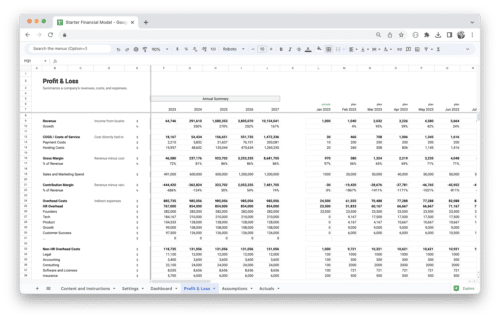Ever wondered what fuels the success of top-tier Software as a Service (SaaS) businesses? The answer lies in their mastery of key SaaS metrics and Key Performance Indicators (KPIs). These metrics are the secret sauce behind data-driven decisions, strategic growth, and the ability to thrive in the ever-evolving world of subscription-based services. In this guide, we’ll take you on a journey through the intricate landscape of SaaS metrics, equipping you with the knowledge to navigate your SaaS venture towards prosperity.
What are SaaS Metrics and KPIs?
SaaS Metrics and Key Performance Indicators (KPIs) are essential tools for monitoring, analyzing, and optimizing the performance of Software as a Service (SaaS) businesses. These metrics provide valuable insights into various aspects of your SaaS operation, enabling data-driven decision-making and strategic planning.
The Importance of SaaS Metrics and KPIs
SaaS Metrics and KPIs are not mere numbers; they are the lifeline of your SaaS business. Here’s why they matter:
- Data-Driven Decisions: SaaS metrics and KPIs provide you with real-time data about your business’s health. This data empowers you to make informed decisions based on facts rather than assumptions.
- Visibility and Accountability: These metrics offer transparency into every facet of your SaaS business, from customer acquisition costs to revenue growth. They hold teams and individuals accountable for their performance.
- Strategic Planning: By tracking relevant metrics, you can identify trends and patterns in user behavior, sales, and marketing. This information is invaluable for crafting and adjusting your business strategy.
- Resource Allocation: Knowing which metrics are most critical helps you allocate resources efficiently. You can invest in areas that directly impact your growth and profitability.
- User-Centric Approach: SaaS metrics often revolve around user behavior and satisfaction. Monitoring these metrics allows you to focus on improving the user experience and increasing customer satisfaction.
- Scaling and Optimization: As your SaaS business grows, metrics become even more vital for scaling operations and optimizing processes. They provide benchmarks for setting performance goals and evaluating success.
- Competitive Edge: Staying ahead of competitors requires a deep understanding of your market and customers. SaaS metrics help you analyze your position and differentiate your offering.
SaaS Metrics and KPIs are the compass that guides your SaaS business toward success. They enable you to navigate the complex landscape of subscription-based services, adapt to changing market conditions, and continually improve your product and services to meet user needs.
Conclusion
SaaS metrics and KPIs are your compass and toolkit for achieving success in the world of subscription-based services. These metrics help you understand your customers, optimize your operations, and make informed decisions that drive growth and profitability. From customer acquisition to product performance, they empower you to stay ahead of the curve, continually improve, and create lasting value for your users. So, embrace the power of data, harness these metrics, and watch your SaaS business thrive in an ever-changing digital landscape.
Remember, the journey to SaaS excellence doesn’t end here. Continuously monitor, analyze, and adapt your strategies based on these key metrics. Keep your users at the forefront of your efforts, and you’ll not only meet their needs but also surpass their expectations. With the right data and insights, you’re well on your way to achieving long-term success in the competitive world of SaaS.
Get Started With a Prebuilt Template!
Looking to streamline your business financial modeling process with a prebuilt customizable template? Say goodbye to the hassle of building a financial model from scratch and get started right away with one of our premium templates.
- Save time with no need to create a financial model from scratch.
- Reduce errors with prebuilt formulas and calculations.
- Customize to your needs by adding/deleting sections and adjusting formulas.
- Automatically calculate key metrics for valuable insights.
- Make informed decisions about your strategy and goals with a clear picture of your business performance and financial health.



















